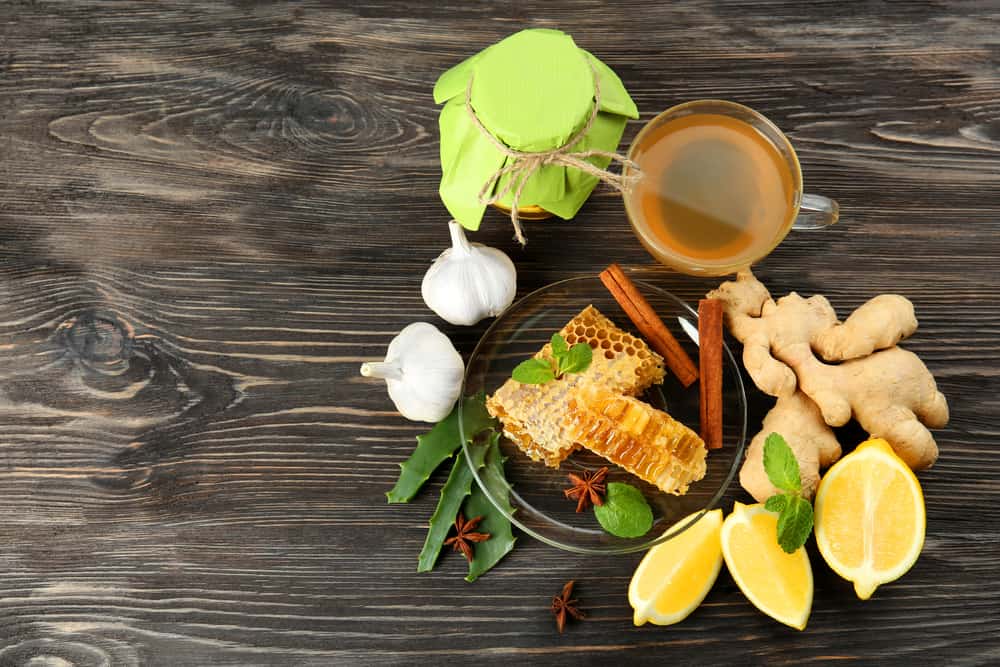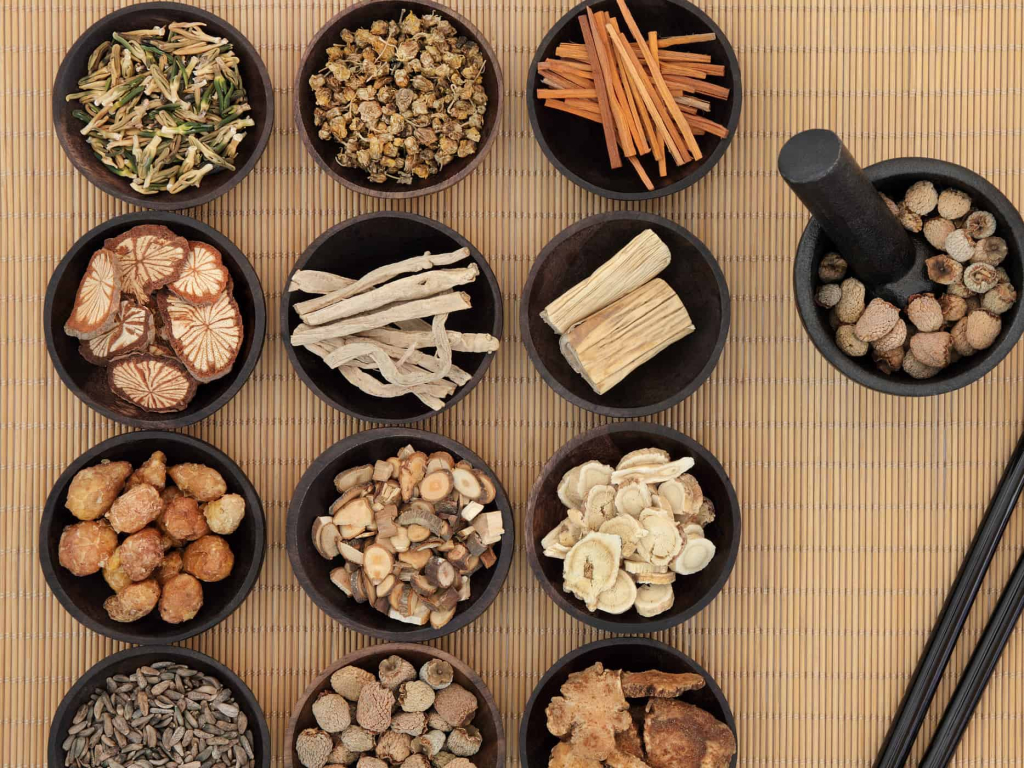7 Natural Ulcer Medicines That Are Safe on the Stomach

One way to help deal with stomach disorders, such as heartburn, is the consumption of herbal medicines. Check out some of the natural ulcer medicine options that you can easily find in the kitchen. Besides being easy, they are also safe for consumption, you know!
Choice of herbal remedies for stomach ulcers and stomach disorders

Gastric disorders are digestive problems that can occur anytime and anywhere. This condition can especially occur when your daily activities are busy, making your eating schedule messy.
In addition to a messy eating schedule, the causes of stomach problems such as ulcers are spicy, fatty, or acidic foods. Gastric disorders such as heartburn can also be triggered by stress.
If you already experience ulcer symptoms in the form of flatulence to nausea and vomiting, of course your activity will be disrupted. To help relieve these symptoms, you can try a number of natural remedies for ulcers and stomach disorders below.
1. Turmeric
Turmeric is a traditional natural remedy that is used to help relieve stomach disorders, such as heartburn symptoms. The polyphenol content in it turns out to have anti-inflammatory properties that help relieve stomach acid.
According to research from International Journal of Molecular Sciences, turmeric is said to help prevent inflammation in stomach disorders or also called GERD disease.
This research shows that the symptoms of stomach disorders can be relieved by drugs that contain antioxidants and anti-inflammatory. Both of these properties can be found in the curcumin contained in turmeric.
2. Red ginger
Apart from turmeric, another herbal natural remedy to help relieve ulcer symptoms is red ginger. This spice has anti-inflammatory properties that are beneficial for patients with stomach problems and can relieve nausea.
On the other hand, red ginger can also be called a natural gastroprotective ingredient. This means that the spice that can be used as tea works by suppressing bacteria Helicobacter pylori (H. pylori), which causes stomach acid to rise.
H. pylori are bacteria that live in an acidic environment. If the numbers multiply and get out of control, ulcer symptoms can appear. This is because an infection of the stomach wall occurs.
With the help of red ginger, the number of bacteria can be reduced, so that the symptoms of stomach disorders or ulcers can be relieved.
3. Natural ulcer medicine with honey
The world of traditional medicine has long used honey for various health problems. This natural sweetener can help with stomach problems, such as preventing acid reflux and relieving sensations heartburn.
Honey is a natural ingredient that has antioxidant properties, so it should come as no surprise that this sweetener can help with stomach problems. There are a number of ways that this natural remedy can treat stomach disorders such as ulcers, namely:
- the texture of honey helps coat the walls of the esophagus (esophagus) and stomach,
- improve the function of the esophageal ring, as well
- helps reduce inflammation of the esophagus.
4. Licorice

Liquorice (licorice) is called a herbal medicine that can help stomach disorders naturally. How can?
You see, liquorice is claimed to strengthen the brain and is analgesic. Numerous studies have also reported that licorice root can increase gastric secretions and keep stomach acid from rising into the esophagus.
You can take herbal or natural remedies containing licorice to relieve symptoms of stomach ulcers and stomach ulcers. Not only that, this spice also provides benefits for overall body health.
Even so, you still need to be careful when using licorice root as a traditional remedy for heartburn. The reason is, everyone’s body may react differently when using herbal medicine.
5. Basil leaves
Apart from being used as an herbal ingredient in cooking around the world, basil leaves can also be used as a natural remedy for stomach problems, such as ulcers.
Basil leaves have carminative, antibacterial, and anti-inflammatory properties. That is, this herbal ulcer medicine can be used to relieve spasms in the intestinal tract which is the cause of flatulence.
You can process basil leaves into tea or include them in cooking. However, you need to add these leaves slowly because consuming too much can trigger stomach upset.
6. Aloe vera juice for natural ulcer medicine
Aloe vera is a plant that is easily found in tropical climates. This plant has often been used as traditional medicine, both topically and orally.
The gel content in aloe vera is believed to have anti-inflammatory compounds, vitamins, minerals and amino acids. That is why, some people believe that aloe vera has a calming effect on gastric problem patients.
Research from Journal of traditional Chinese Medicine reported that aloe vera juice without dyes and sweeteners is a safe herbal remedy for gastritis. This juice can effectively help reduce symptoms heartburn by reducing acid production.
However, you still need to be vigilant because aloe vera juice can not be separated from side effects, such as diarrhea. The reason is, aloe vera contains anthraquinones, which are compounds found in laxatives.
7. Mint leaves
Since long time ago, mint leaves have often been used to treat digestive problems. Until now, natural remedies containing mint leaves can also be used to relieve symptoms of stomach disorders, such as heartburn, flatulence, or nausea.
Mint leaves can help relax stomach muscles that are sore due to flatulence. The way it works is by pushing out gas in the stomach. However, the use of mint leaves is not recommended for GERD patients.
You can take herbal remedies that can solve the symptoms of indigestion, especially those related to the stomach organ with the seven ingredients above.
That way, you can get rid of the annoying symptoms immediately and be able to get back to your normal activities.
Hello Health Group does not provide medical advice, diagnosis or treatment.
Peppermint. (nd). Mount Sinai. Retrieved 27 May 2021, from https://www.mountsinai.org/health-library/herb/peppermint
Kwiecien, S., Magierowski, M., Majka, J., Ptak-Belowska, A., Wojcik, D., Sliwowski, Z., Magierowska, K., & Brzozowski, T. (2019). Curcumin: A Potent Protectant against Esophageal and Gastric Disorders. International journal of molecular sciences, 20 (6), 1477. https://doi.org/10.3390/ijms20061477. Retrieved 27 May 2021.
Escobedo-Hinojosa, WI, Gomez-Chang, E., García-Martínez, K., Guerrero Alquicira, R., Cardoso-Taketa, A., & Romero, I. (2018). Gastroprotective Mechanism and Ulcer Resolution Effect of Cyrtocarpa procera Methanolic Extract on Ethanol-Induced Gastric Injury. Evidence-based complementary and alternative medicine: eCAM, 2021, 2862706. https://doi.org/10.1155/2018/2862706. Retrieved 27 May 2021.
Nikkhah Bodagh, M., Maleki, I., & Hekmatdoost, A. (2018). Ginger in gastrointestinal disorders: A systematic review of clinical trials. Food science & nutrition, 7 (1), 96–108. https://doi.org/10.1002/fsn3.807. Retrieved 27 May 2021.
Babaeian, M., Naseri, M., Kamalinejad, M., Ghaffari, F., Emadi, F., Feizi, A., Hosseini Yekta, N., & Adibi, P. (2015). Herbal Remedies for Functional Dyspepsia and Traditional Iranian Medicine Perspective. Iranian Red Crescent medical journal, 17 (11), e20741. https://doi.org/10.5812/ircmj.20741. Retrieved 27 January 2021.
Math, MV, Khadkikar, RM, & Kattimani, YR (2013). Honey – a nutrient with medicinal property in reflux. The Indian journal of medical research, 138 (6), 1020–1021. Retrieved 27 January 2021.
Panahi, Y., Khedmat, H., Valizadegan, G., Mohtashami, R., & Sahebkar, A. (2015). Efficacy and safety of Aloe vera syrup for the treatment of gastroesophageal reflux disease: a pilot randomized positive-controlled trial. Journal of traditional Chinese medicine = Chung i tsa chih ying wen pan, 35 (6), 632–636. https://doi.org/10.1016/s0254-6272(15)30151-5. Retrieved 27 January 2021.